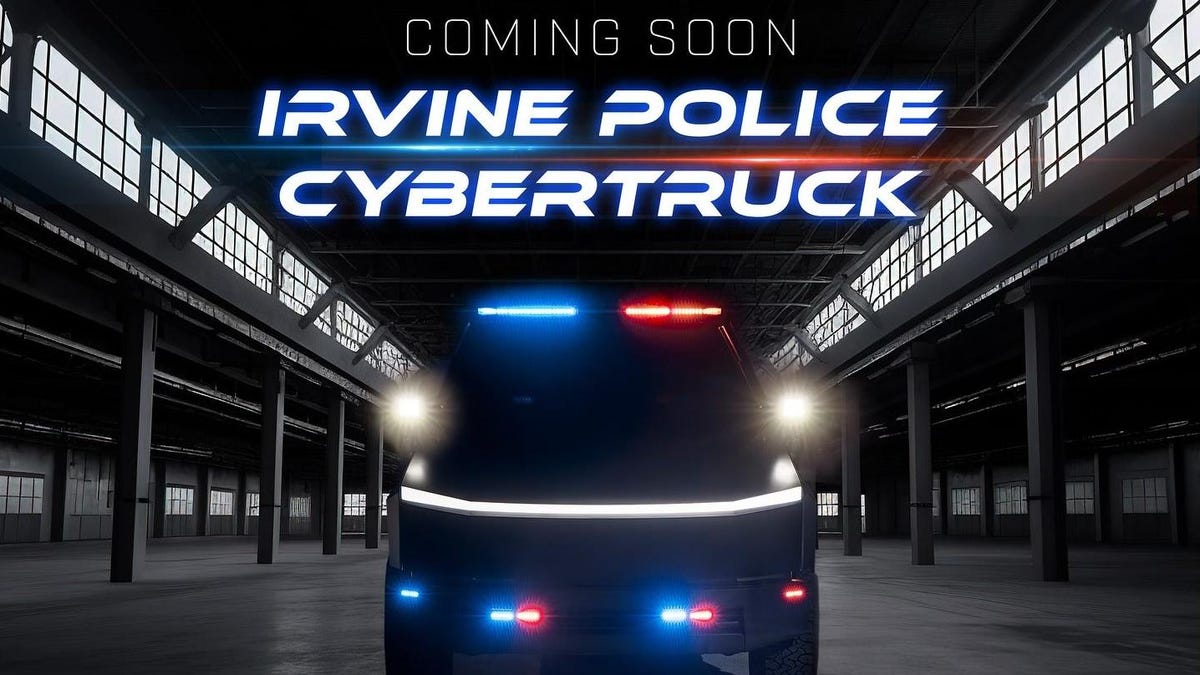Police departments across the country have been scrambling to be the first to purchase one of Tesla’s Cybertrucks. For whatever reason, the low-res truck appeals to law enforcement. Irvine, California looks to be the first police department in the country to have purchased the electric truck, and after it was been revealed just how much money the department dropped on the truck, a lot of people are unhappy.
Public records show that the Irvine Police Department paid over $150,000 for its Cybertruck, KTLA reports. What’s worse is that it seems like the department attempted to keep the amount secret, as KTLA says the department was being tight-lipped about the exact amount “without the filing of a public records request.” Irvine Police went all out with their Cybertruck, too. KTLA points out the price includes the base price of the Cybertruck and the law enforcement conversion.
Part of that cost is due to the model purchased by the IPD. The 2024 Tesla Cyberbeast, a higher-performance and more expensive edition of the idiosyncratic Cybertruck, cost the city more than $132,000, but it was the only model available at the time, said Sgt. Karie Davies.
In addition, the “off-site law enforcement equipment installation” for the Cybertruck requires the city to pay nearly $21,000 more for the work to be done by a Hawthorne-based business, bringing the total to more than $153,000.
When asked about the amount, the department seemed to make excuses for it. All the equipment the conversion came with for instance “is necessary for any police vehicle so it can be used properly if called upon,” Sgt. Davies explained. The price isn’t much of an issue to the department either, as Davies said gas-powered patrol cars “cost about $116,000” and require thousands more in fuel and maintenance costs. Ultimately though, the department claims the Cybertruck will be used for public engagement and drug discouragement programs like DARE.
The public and experts see it differently, with some saying the funds used for the truck would have been better spent elsewhere. Fordham Law School professor Bennett Capers says the funds used were taxpayer money and he isn’t buying the public engagement angle the department is pitching. “If you want to encourage youth, you could do things that would help youth, like go to playgrounds and play football and basketball with kids. That seems more likely to help them than a Cybertruck.”
Director of community engagement for the nonprofit Center for Policing Equity Brittenay Causieestko-Lee took issue with the department’s secrecy about the cost of the Cybertruck, calling for budget transparency. “Spending $150,000 on such a high-performance vehicle for a program like DARE seems very excessive, especially for your taxpayers, especially when there’s cheaper alternatives as well,” she told KTLA.

